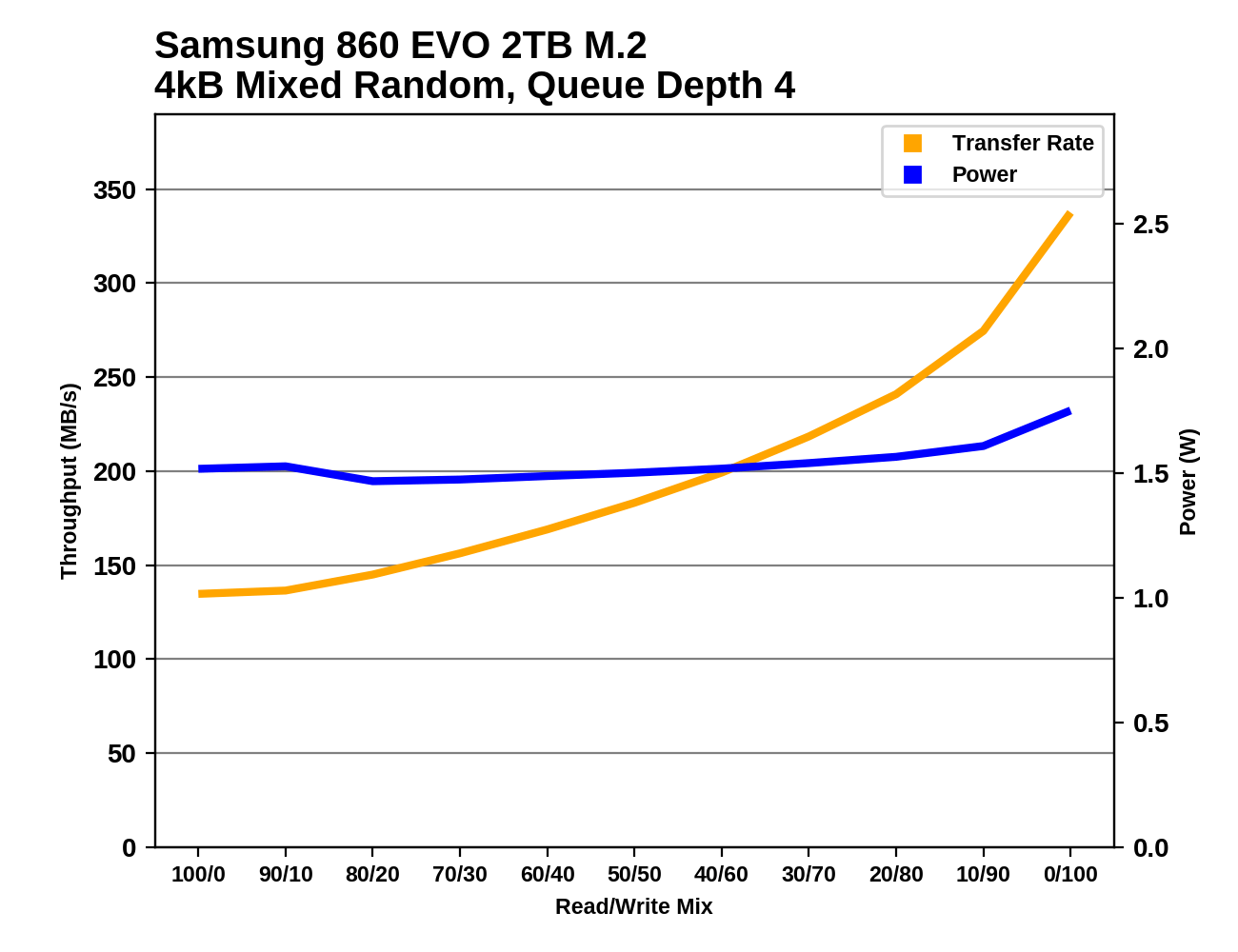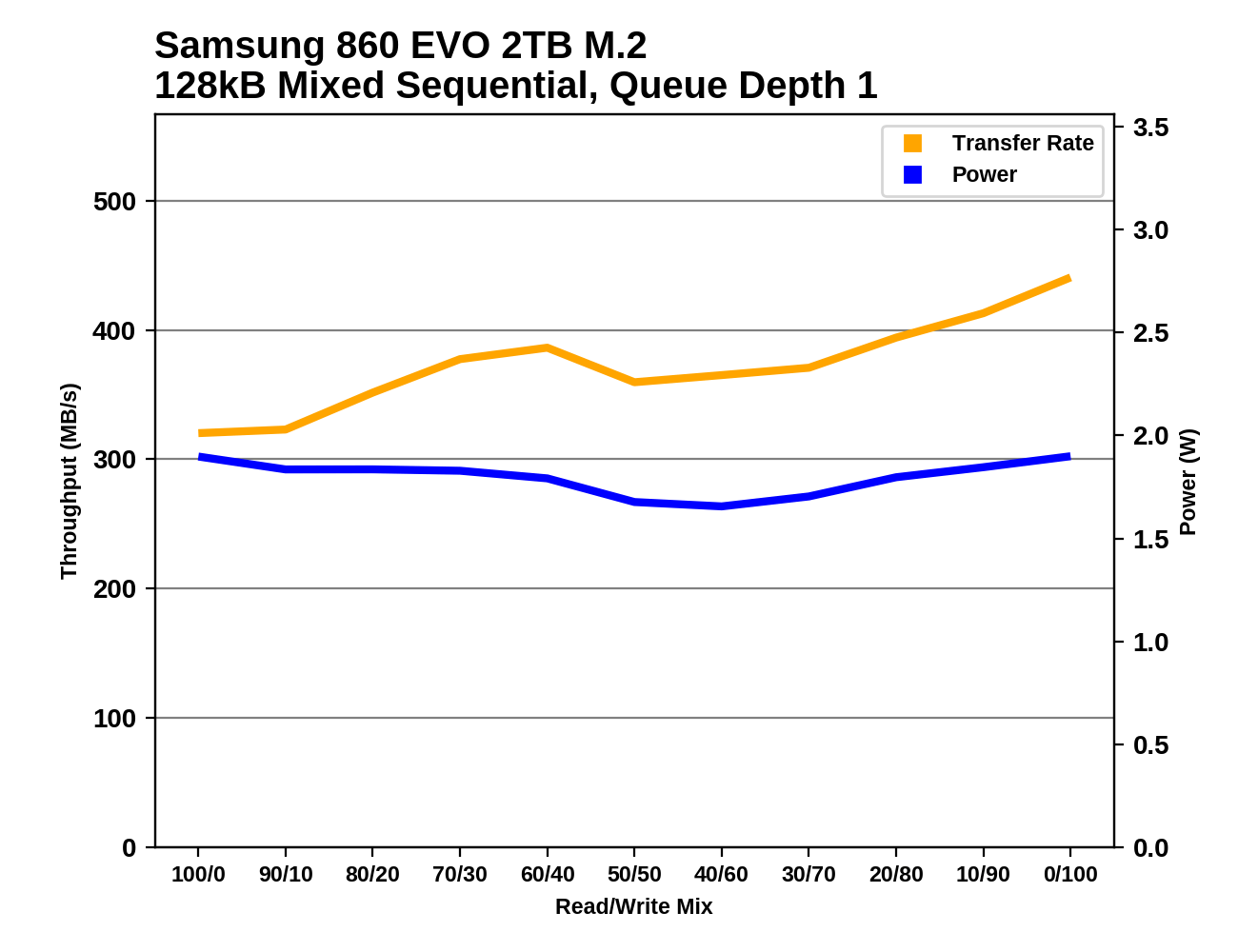The Latest High-Capacity M.2: The Samsung 860 EVO 2TB SSD, Reviewed
by Billy Tallis on February 14, 2018 1:40 PM ESTMixed Random Performance
Our test of mixed random reads and writes covers mixes varying from pure reads to pure writes at 10% increments. Each mix is tested for up to 1 minute or 32GB of data transferred. The test is conducted with a queue depth of 4, and is limited to a 64GB span of the drive. In between each mix, the drive is given idle time of up to one minute so that the overall duty cycle is 50%.

The performance of the Samsung 850 EVO on the mixed random I/O test was still adequate in the face of today's competition, so the large jump in performance the 860 EVO brings gives Samsung a substantial lead over other TLC SATA SSDs

The power efficiency gains of the 860 EVO are even larger than the performance gains; the 860 EVO delivers 33% higher performance per Watt than the next best 64L 3D TLC drive.
 |
|||||||||
The performance of the 860 EVO climbs steadily as the proportion of writes in the test workload increases. The 850 EVO's performance was mostly flat through the first half of the test, and the competition's drives tend to lose a bit of performance somewhere along the way before recovering near the end of the test.
Mixed Sequential Performance
Our test of mixed sequential reads and writes differs from the mixed random I/O test by performing 128kB sequential accesses rather than 4kB accesses at random locations, and the sequential test is conducted at queue depth 1. The range of mixes tested is the same, and the timing and limits on data transfers are also the same as above.

The mixed sequential I/O test shows a bit of a performance regression for the 860 EVO, dropping it slightly below the normal range for good SATA drives. The Crucial MX500 is a bit more of an outlier on the low side.

If it weren't for the 860 PRO, the power efficiency improvement of the 860 EVO over its predecessor would be very impressive. Even overshadowed by its MLC counterpart, the 860 EVO's efficiency is great and well ahead of the competing mainstream SATA SSDs.
 |
|||||||||
Most of Samsung's SATA drives exhibit a bathtub curve for performance, hitting a minimum early in the second half of the test. The 860 EVO gets off to a poor start and actually increases performance through most of the first half of the test as it catches up to the typical Samsung performance curve.










32 Comments
View All Comments
yifu - Wednesday, February 21, 2018 - link
Super small External storage usb 10gb . Or Add Internal 2nd storage for laptop . Like the xiaomi mibook proyifu - Wednesday, February 21, 2018 - link
SATA SSDs at this moment is about price! If you do not have amazing power consumption, or features like PLP and end to end data protection. There isn’t much to make me pay . SATA SSDs will become storage disk , os boot drive will be PCIe from now on.Price and Power consumption aee important for older laptops upgrades. Price and features are important for people who are looking for SATA SSDs for data storages.
Speed is not important any more.but , I only look for high seq write speed that last long enough.